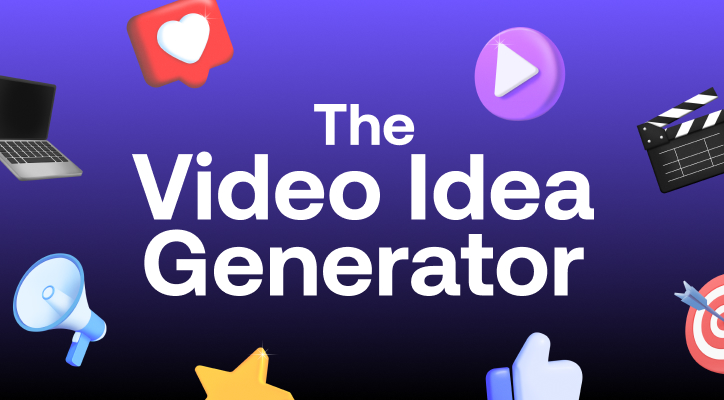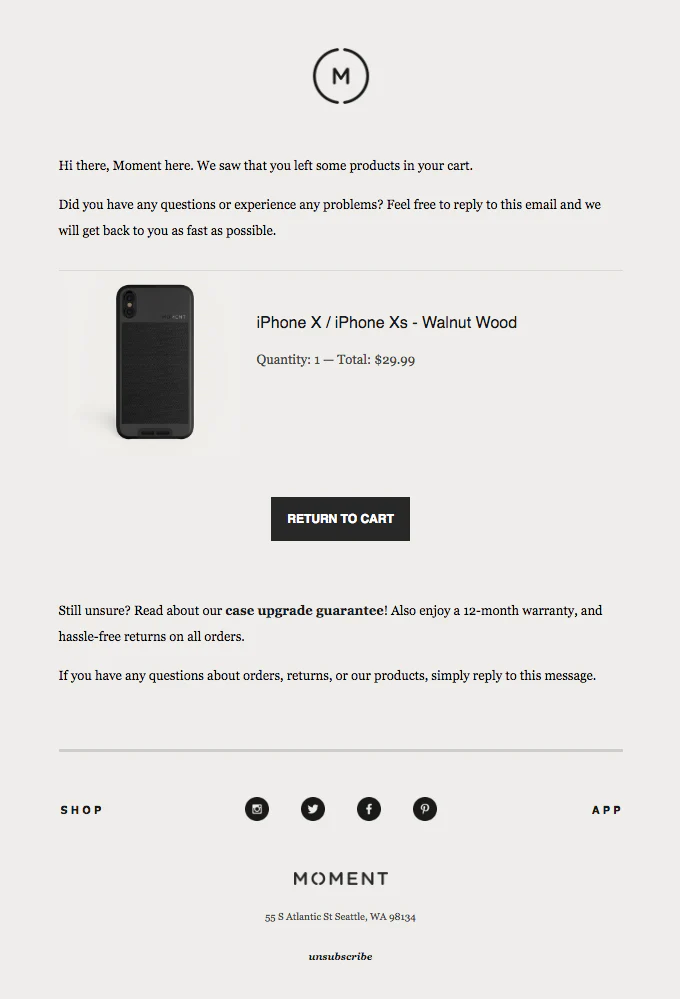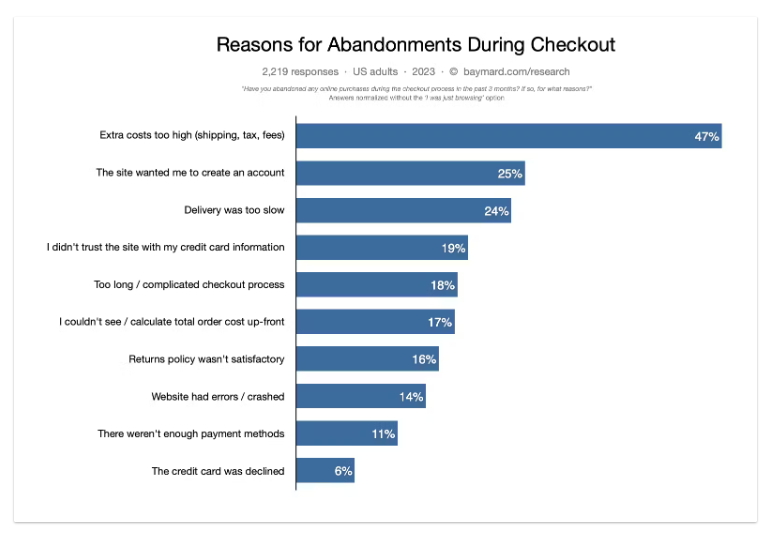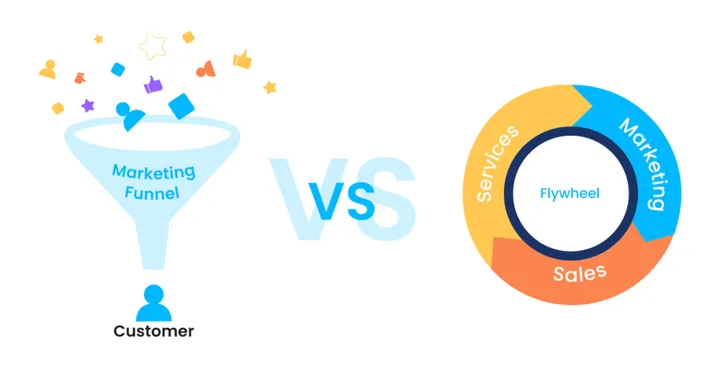Getting sales is tricky. You started out full of hope that you’re going to meet (and even exceed) your sales goals, but sales are slow.
You’ve tried several marketing tactics. Reach is good. People are clicking on your website. But not many are converting. And the ones that are converting, are not turning into return customers nor referring your business to their friends and family.
You’re panicking. What now?
Do you change your marketing tactics? Do you email all your clients individually? Do you optimize your website? What sales techniques are you getting wrong?
This is where a sales funnel comes in.
It helps you identify why your sales are slow and at what point. Then you can work on optimizing your sales funnel and increasing sales consistently.
While initially the sales journey was a linear process, now it’s full of detours. So you need to build a solid sales funnel with minimum gaps to convert maximum clients.
Here’s how you can do that.
What is a Sales Funnel?
A sales funnel is where customers make the journey from prospecting to purchasing.
Similar to a physical one, you start off with attracting hundreds and thousands of prospecting clients and direct them through the sales path. The pool of prospects that reach the last stage is the smallest and the most likely to convert.
Why is The Sales Funnel Important?
Primarily to increase sales and grow your business. That’s obvious.
But there are several other reasons why a sales funnel is crucial for businesses in the present time. Let’s discuss some of the most important ones.
Focuses your marketing efforts
You’re spending a lot of time and effort on marketing. There are UGC and influencer campaigns on digital platforms, paid Google advertisements, SEO, and whatnot.
But how do you know which of your marketing efforts ( and dollars) are reaping results?
Through a sales funnel.
A sales funnel will help you identify which marketing efforts to use at which point of your sales and customer journey to maximize sales and the effectiveness of your marketing campaign. It will also help you allocate your marketing dollars more efficiently.
For example, in the awareness stage when you’ve just introduced a new product and you’d like to generate interest in it, you want to focus on influencer and content marketing.
Hard-selling with limited time offers, discounts, and targeted advertisements (with big ad budgets) come at a later time when clients are ready to purchase.
Help you with customer segmentation
Segmenting your clients at different levels of your sales funnel is crucial for businesses wanting to optimize and increase sales.
Clients who just discovered your website will enter your sales funnel at the awareness stage. The ones who want to buy your products are entering a decision state.
Knowing what type of customers enter your sales funnel at what stages can help you produce content and lead nurturing tactics tailored specifically for them - in turn, massively increasing sales.
You can then optimize their conversion paths, too. For example, if clients are dropping off after visiting your homepage, you might want to rework your homepage and optimize it for better conversions.
If repeat clients are buying the same products each time, you may want to experiment with adding upsells to your checkout page.
Boosts your customer retention rates
We all want clients who stay with us forever, right? Ones who buy every month and refer our products to their friends and family.
Afterall, acquiring new clients is 5 times harder than retaining old ones.
A strong sales funnel nurtures clients at every step of the way.
From personalized content at every step of the funnel to re-engagement campaigns and post-purchase engagement, a sales funnel helps you produce strategies that massively boost customer retention rates.
What are the 6 Stages of a Sales Funnel?
Different businesses have different sales funnels. But the basic hierarchy remains the same.
And as prospects go up the sales funnel, their pool gets smaller and smaller - but their conversion rates start increasing.
1. Awareness
This is the step where you attract through digital platform marketing, online advertising, or even content marketing.
They’re looking for a solution to their problem and they’ve come across your brand online as an option that offers that solution.
At this point, not all the traffic that lands on your website has the potential to convert, but the ones that do will go to the next stage.
2. Interest
The prospect pool is slightly smaller, but more interested in your offerings and discovering different options. They’re browsing through your website, combing through your social media posts, and learning more about the solutions you offer.
Your objective at this time is to generate interest in your products and services by creating informational content.
For example, product feature videos, educational posts on your website blog, soft-selling your offerings, webinars to further educate your public and establish your authority, and lastly email newsletters with educational campaigns and promotions to further intrigue the interested leads.
Let’s say, you’re in the fitness industry. You can produce videos of different exercises that people can easily do at home to build muscle like Fitness Blender does.
3. Consideration
Now leads interested in the solutions you offer will try to learn more about your products and services so they can make their mind whether they want to buy from you or not.
This is the time when you produce detailed product demos, offer Live Q and A sessions for your public, produce video case studies and highlight testimonials from happy clients and clients to further convince your public that you’re the absolute best.
4. Intent
The pool of your audience is getting smaller and smaller, but the ones that have reached this stage of this funnel are almost sure they want to purchase from you.
At this point, you need to nurture them and gently lead them to the Add to Cart button. Offer free product demos, and email them promotions and first order discount codes. Run time-sensitive and FOMO-inducing promotions like Shopify does here.
If you’re an eCommerce business, potential clients may have left products in their cart and exited the website so you need to nurture these leads and send them abandoned checkout emails.
5. Purchase
Whoosh. Prospects are primed and ready to click that Add to Cart button and complete the transaction.
At this stage, you need to make the entire checkout process as easy as possible for the clients like offering multiple payment options and allowing guest checkout.
6. Post-purchase
Think your sales funnel has ended? Think again. This is the most important part - retaining customers.
Once a customer has purchased from you, your objective is to provide excellent post-purchase service and remind them with a lead nurturing email sequence to buy from you again and again.
Send Thank you emails, offer excellent customer service and support, introduce them to loyalty programs and referral programs.
How BaseCamp Created a Sales Funnel that You Can Emulate
Basecamp, a project management and online collaboration software, has created an excellent sales funnel that has resulted in over 75,000 organizations using it.
It lures in prospects through excellent marketing. Its Learn with Basecamp page has a plethora of educational information for prospects just browsing around for collaboration and management software. It further creates excellent content and a war community on digital platforms to build knowledge around its offerings.
Once prospects enter the interest and consideration stage, Basecamp helps them cement their decision by taking them through a highly optimized landing page.
Clear CTAs offering free demos, super fun visuals depicting how Basecamp can make your life easier, and reviews by industry giants like Shopify, Basecamp quickly leads them to the purchase stage.
Still unsure if you want Basecamp in your life?
This big banner on the Pricing page should help convince you.
The pricing page is highly optimized with multiple pricing options to help clinch the deal.
The best part?
This comparison table. It quickly tells your prospects and clients that they’re saving a lot of money by clicking the Buy Now button.
TDLR: Basecamp knows exactly who their target audience is, what their pain points are, and how to solve their problems in all of the stages.
5 Step Process to Create and Measure a Sales Funnel
You’ve decided you want to produce a sales funnel for your business. Where do you start from?
1. Define your target audience
- Who’s your target audience?
- What are their exact pain points when searching for a solution you offer?
- Does price concern them?
- Are they looking for a specific solution to their problem or an all-in-one solution?
Use platforms like Reddit, Quora, Facebook and Linkedin groups, and comb through digital platform comments to deeply analyze your public and their wants and needs.
2. Determine your stages
There are 6 primary sales funnel stages but not every business needs all 6. You can tailor these stages according to your target audience and their needs.
For example, if you’re in the plumbing business, it is entirely possible for you to skip the first two steps and directly jump to the consideration stage as consumers know they need a plumbing service and are considering different businesses.
So sit with your sales team and identify the different stages of the sales funnel you’ll need for your business and sales goals.
3. Create targeted strategies for each stage
Next, think of targeted strategies and content for each of the stages using your customer’s pain points.
In the awareness stage, create viral worthy content that brings awareness towards your business. You can also make guest appearances at industry favorite podcasts and webinars to further build knowledge around your offerings.
Next is generating their interest. Focus on establishing your authority here and create educational information on digital platforms, podcasts, webinars and your blog.
When you’re leading them to the consideration stage, focus heavily on case studies, testimonials and run Live Q and A sessions to answer all their questions.
Prospects are almost ready to buy from you. This is the time to offer free demos and product trials, offer a comparison of your services and price points with your competitors, and counteract any objections they may have to buying from you. Also the time when you need to leverage social proof in every form.
Pages with social proof in the form of content have an average conversion rate of 12.50%.
Finally, they’re about to buy from you. Make the purchasing process as seamless as possible by highly optimizing your pricing and checkout pages.
Ka-ching. They’re purchased. Hooray.
It’s time to nurture these leads with a comprehensive lead nurturing email sequence. Offer them loyalty programs, 2nd order discounts, and other benefits to encourage them to keep coming back and purchasing more. This is also the time to offer excellent client service to retain these clients.
Source: Really Good Emails
4. Test and optimize
You can’t just produce a sales funnel and forget all about it. You need to constantly test it to see which strategies are working and bring in leads, and which ones are leaking sales.
Use analytic tools to monitor your customer’s behavior at all stages of the funnel.
Track their conversion rates, traffic, drop off points, bounce rates and use all these insights to further optimize your sales funnel.
Use customer data to further optimize your sales funnel.
You can,
- run surveys,
- ask clients their feedback in person,
- and send them occasional feedback emails
5. Use automation to streamline
You can automate several elements of the sales funnel for increased efficiency.
For generating leads, you can set up automated lead magnets (like gated and downloadable content, quizzes, and the likes) and implement chat bots.
Use CRM softwares to automate administrative tasks like data entry, appointment scheduling and so on. You can also integrate tools that automate creating quotes and proposals and allow them to sign agreements online.
Similarly, for the consideration and intent stage, you can automate content scheduling. Automated customer tickets are also an excellent idea to automate some part of the customer service.
To nurture leads, automated lead nurturing and drip email campaigns are an excellent way to save time, money, and offer personalized content. Trigger emails based on the different stages your audience is at - when they’ve exited without checkout, if they’ve visited your website multiple times and haven't bought anything, and when they’re opening emails.
Similarly, run automated A/B testing campaigns on different elements of your landing page to measure the results.
There’s a lot you can automate to streamline your funnels and increase efficiency.
3 Ways to Optimize Your Sales Funnel in 2024
You’ve created a sales funnel but it’s not getting the results you want. Sales are still slow and customer retention is not going up.
These 3 tried and tested tips will help you optimize it.
Focus on your landing page
The first step is optimizing your landing page.
Start with a clear value proposition.
What is your solution to your prospects’ problems? Clearly define it in the header. Next, produce a benefits driven copy. Highlighting features is important, but first you need to focus on the benefits - what’s in it for the clients.
Place action oriented, simple, and clearly visible Call to Action buttons on the page at different places.
However, the CTA should be the same across the page, but clients should be given multiple opportunities to click on it as they go down the page.
Mobile optimization and page responsiveness are two critical elements of a highly optimized landing page, so keep that in mind when designing your website.
Add trust elements throughout the page like testimonials, any certifications and awards you've received, ratings, number of customers you have, etc.
According to Northwestern University's Spiegel Research Center, online reviews can raise conversion rates by as much as 270%.
Lastly, add exit intent popups to capture leads that exit without entering your sales funnel.
Make checkout page as seamless as possible
70% of your potential customers abandon their carts on the checkout page.
The best way to minimize that percentage? By optimizing your checkout page.
Your prospect is in the last stages of your sales funnel. Almost about to checkout, but then abandons the cart. What do you do?
- Streamline your checkout process and reduce the amount of fields they have to enter to complete their purchase. Offer auto-fill feature for more convenience.
- Offer a guest checkout option, so people don’t have to sign in just to buy from you.
- Create a cart abandonment email sequence to remind them they’ve left something in their cart. Offer incentives to complete purchases if they still do not buy. Cart recovery emails have an order rate of 2.4%, so don’t disregard them
- Keep the checkout page design mobile responsive, easy to navigate, and super fast. No one’s got time to wait if the checkout page is glitching.
Keep a lookout for all sales funnel leakages
Monitor your customer’s journey and identify at what stage of the funnel they’re dropping off and why.
Keeping a close eye on your analytics and KPIs can help you determine leakages in your sales funnel. Google Analytics offers multiple reports that can help you identify leaks in your funnel like,
- Visualization report (Conversions > Goals > Visualization)
- Goal flow report (Conversions > Goals > Goal Flow).
- Reverse goal path report (Conversions > Goals > Reverse Goal Path)
Review these reports and find the ‘leaks’ in your strategy.
Once you’ve identified them, start fixing them ASAP.
Do you have high bounce rates on your landing pages (visitors visiting your website but leaving without taking action)?
Optimize your landing pages and A/B test your CTAs and main headers.
The leads you’re attracting are not high-quality?
Take a look at your marketing strategies in the awareness stage. Experiment with paid social ads and influencer marketing to attract the right leads.
Customers purchasing once but not turning into repeat customers?
Work on your post-purchase email sequence and offer different incentives (like loyalty programs, discount vouchers, etc) to lure them back, like this offer here by TieBar.
Sales Funnel vs Flywheel
Every business needs a funnel. But not every funnel needs to be the good old traditional one. A lot of businesses are adopting the flywheel approach to acquire and convert customers.
So what is a Flywheel and how does it differ from a sales funnel?
You know how a sales funnel is a linear process to convert customers, right? There are multiple stages of the funnel and prospects go through each stage till they reach the last step and finally convert into clients.
The primary goal of a traditional sales funnel is converting prospects into customers.
Flywheel’s a little different.
It represents a circular client journey which involves 3 main steps; attract, engage and delight. It places a strong emphasis on providing exceptional client service through the process, so that not only prospects turn into clients but they also refer other people to your business.
Customer’s happiness is a key goal of the flywheel process and happy customers will not only come back for more, they will also happily multiply.
Conclusion
Generating leads and increasing sales without a sales funnel is like shooting in the dark.
You may meet a few of your goals but there are no systems in place to keep meeting those sales goals and exceed them, to identify where you are lacking and how to optimize your processes.
So start with a simple sales funnel and keep monitoring your client journey to optimize sales. You can also create videos to help with your sales funnel using PlayPlay's easy-to-use video maker! Start your free trial today.








